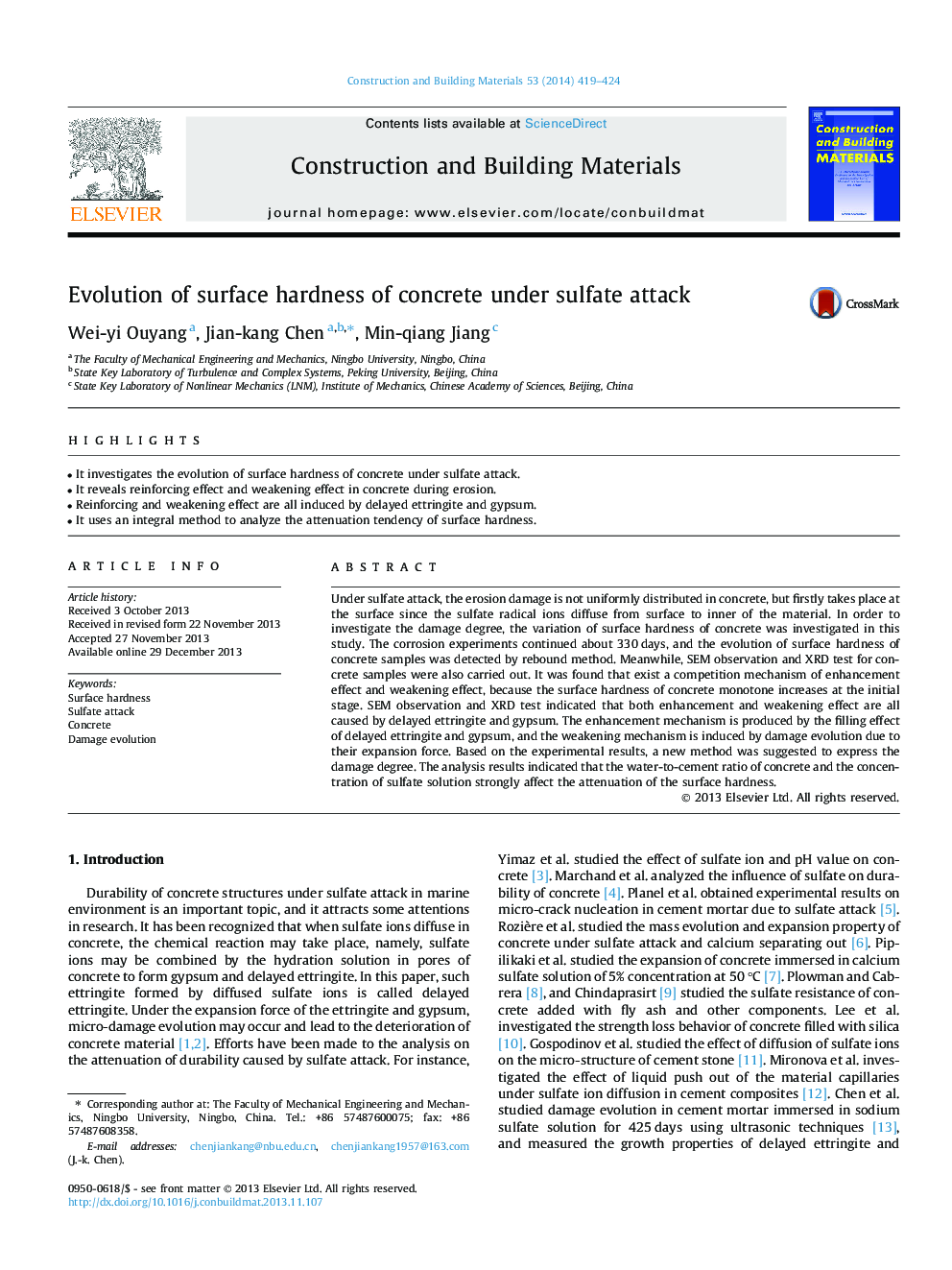| کد مقاله | کد نشریه | سال انتشار | مقاله انگلیسی | نسخه تمام متن |
|---|---|---|---|---|
| 257768 | 503600 | 2014 | 6 صفحه PDF | دانلود رایگان |
• It investigates the evolution of surface hardness of concrete under sulfate attack.
• It reveals reinforcing effect and weakening effect in concrete during erosion.
• Reinforcing and weakening effect are all induced by delayed ettringite and gypsum.
• It uses an integral method to analyze the attenuation tendency of surface hardness.
Under sulfate attack, the erosion damage is not uniformly distributed in concrete, but firstly takes place at the surface since the sulfate radical ions diffuse from surface to inner of the material. In order to investigate the damage degree, the variation of surface hardness of concrete was investigated in this study. The corrosion experiments continued about 330 days, and the evolution of surface hardness of concrete samples was detected by rebound method. Meanwhile, SEM observation and XRD test for concrete samples were also carried out. It was found that exist a competition mechanism of enhancement effect and weakening effect, because the surface hardness of concrete monotone increases at the initial stage. SEM observation and XRD test indicated that both enhancement and weakening effect are all caused by delayed ettringite and gypsum. The enhancement mechanism is produced by the filling effect of delayed ettringite and gypsum, and the weakening mechanism is induced by damage evolution due to their expansion force. Based on the experimental results, a new method was suggested to express the damage degree. The analysis results indicated that the water-to-cement ratio of concrete and the concentration of sulfate solution strongly affect the attenuation of the surface hardness.
Journal: Construction and Building Materials - Volume 53, 28 February 2014, Pages 419–424
